The country is named after it, after all.
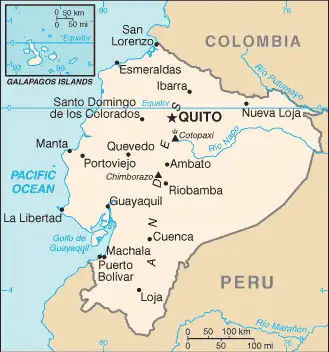
With the equator being so close to Quito, we couldn’t help but take in a couple of sites dedicated to it – and naturally, there’s a twist to them.
We start the story at the Mitad del Mundo just outside of Quito…
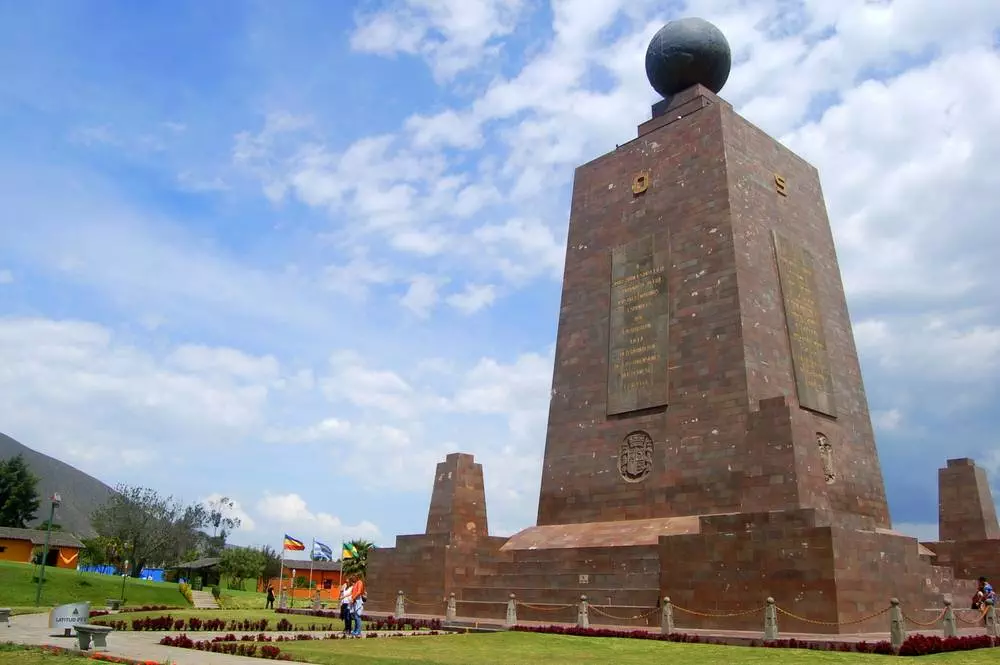
Most mainstream places aren’t on our list of places to see, but the Mitad Del Mundo is a decently done tourist attractions for the masses. The five-ton, 30-meter-tall pillar as seen above is the main attraction, with a solid yellow line supposedly delineating the hemispheres. Each cardinal point has a signboard explaining the symbolism of the carvings. Go ahead, get your corny pictures with one foot on both sides of the lines if you like.
You have the French Geodesic Mission in 1736 to thank for the equator – the history of their mission here is noted. We’re not done with this site, though – towards the souvenir store, look for a sign offering you a drive up to the volcanic crater, Pululahua. It’s a $4 round-trip, and for an hour-long excursion, that’s not bad.
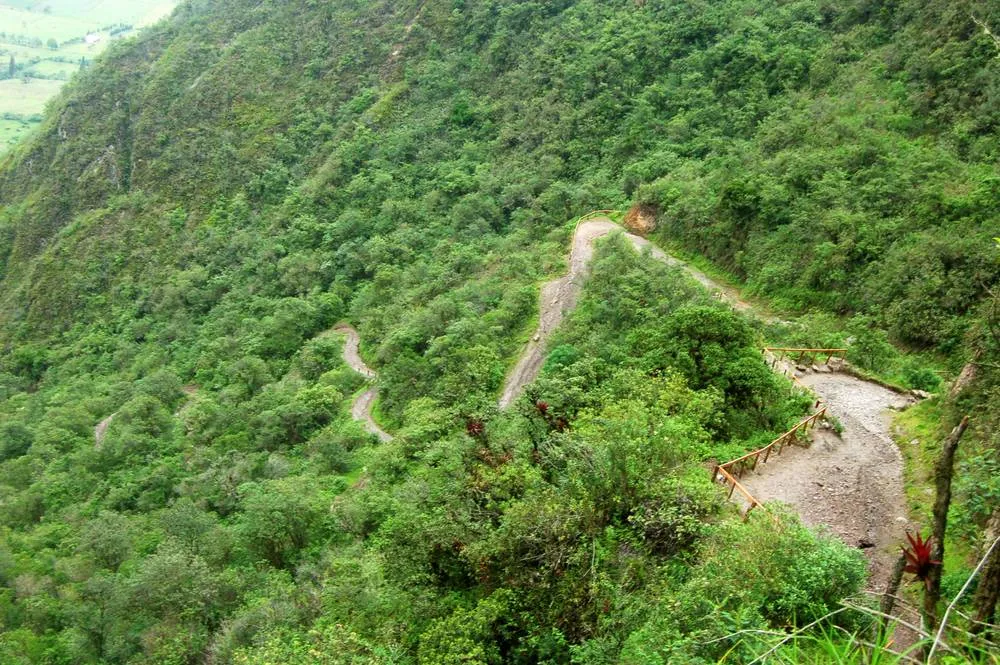
The bilingual guide drove the small group to a volcanic crater look out over a farming village, and it’s green everywhere. Volcanic soil is great for growing stuff, though after 3pm there’s very little to see from this look-out point. Warm wind comes from the Pacific some 200 kilometers away during the day and later mixes with a cool wind from Andes, producing plenty of fog.
The volcano’s not entirely dead – volcanic activity was recorded as recently as 2004, and is classified as ‘potentially active’. About 100 families live there and grow potatoes, corn, and peas in the half of the crater that’s not a natural reserve area,
The Mitad Del Mundo has a bit else to do in the area, but overall I’m giving it a ‘meh’. It’s decently done, but it’s not even the only place worth visiting within walking distance…
The quirkier side to the story: The Intinan Museum (Museo Intinan)
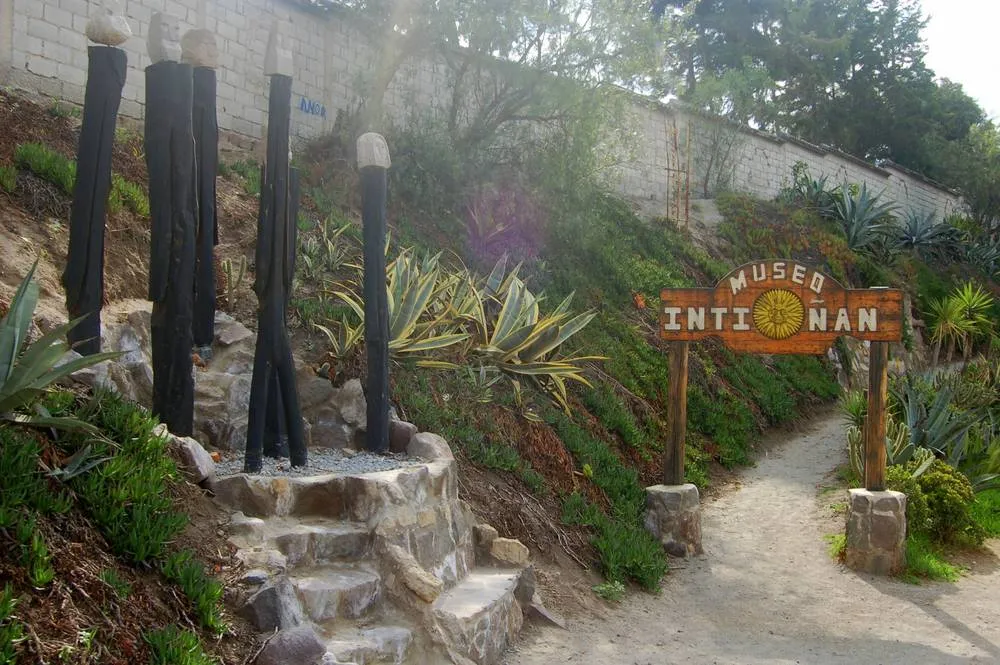
Within walking distance of the Mitad del Mundo, the Intinan Museum / Museo Intinan / Museo de sitio Intiran is the real reason to come here. Since both places will nicely fit in a half-days travel from Quito, you may as well combine them.
The Intinan museum has its own line that claims to be the true equator, and an English-speaking tour guide showed us around the site. We’ll get back to him in a minute.
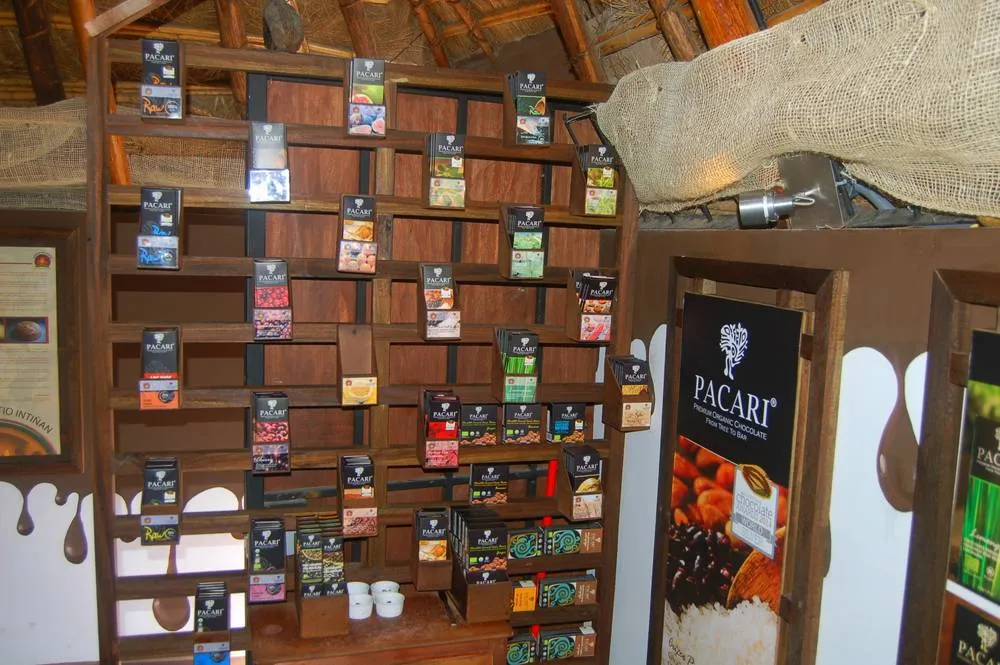
No tacky, campy sort of place would be complete without at least one display / exhibit that had nothing to do with the place. Here it is – organic Pacari chocolate, anyone? It’s made here in Ecuador and comes in plenty of varieties… but this is the middle of the world we’re talking about, so let’s get back to it.
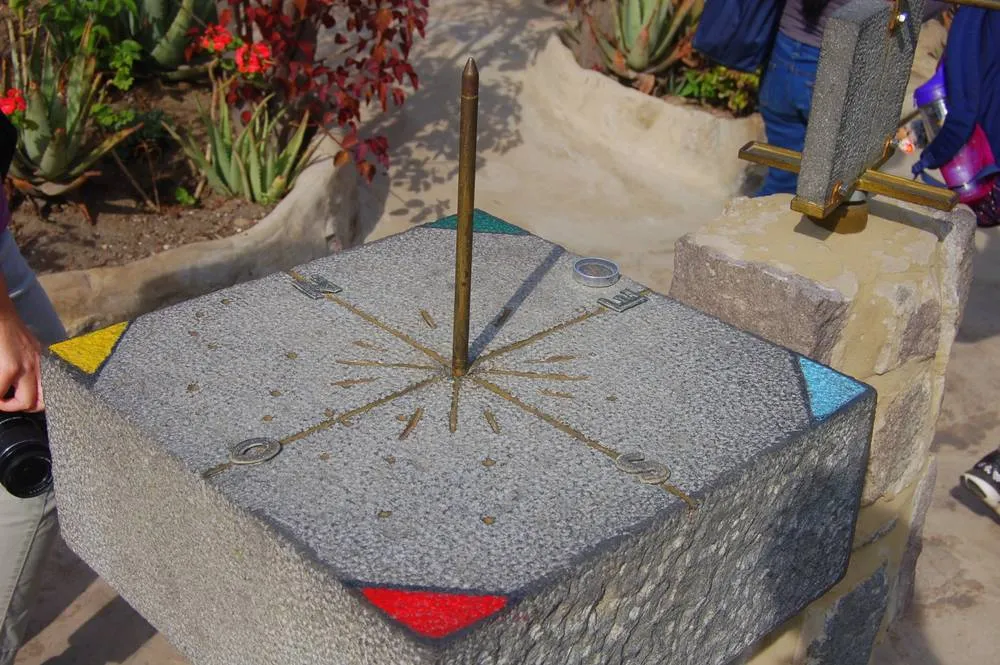
A sundial pointing the way, some history lessons, and a couple of other unremarkable exhibits slowly give way to some of the more campy demonstrations:
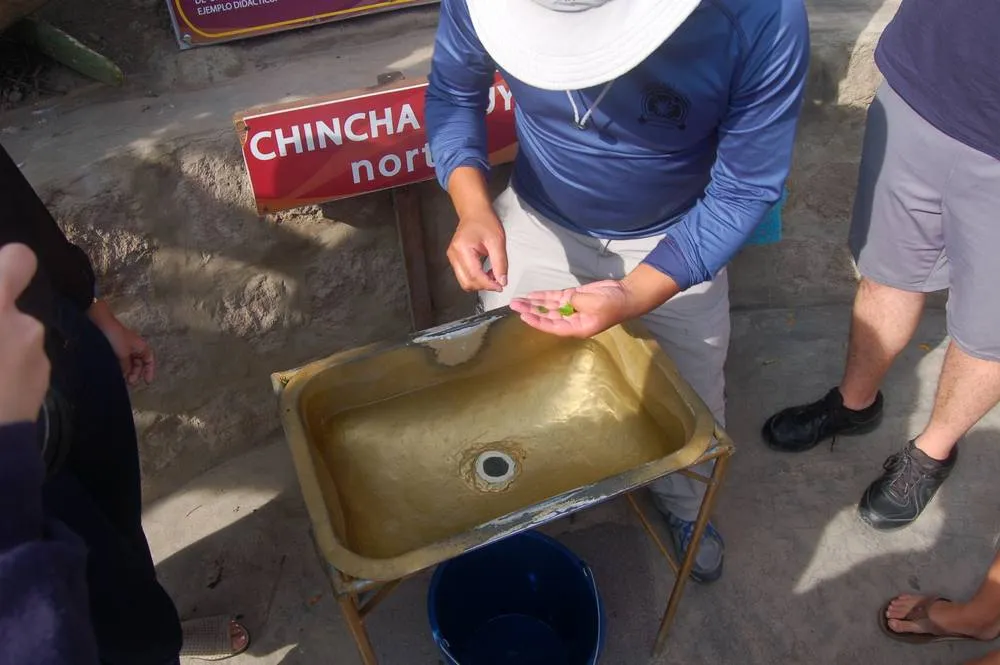
According to the tour guide, there are no cyclones / tornadoes in Ecuador, since the winds cancel each other out. In the northern hemisphere, the Coriolis effect means water drains counter-clockwise; it’s the other way around in the southern hemisphere. Since the exact line of the equator runs through this site, the water runs one way on one side of the line, and vice versa on the other. On the exact line, the effects cancel each other out. The demonstration above aims to show how water flows on one side of the line, then is done again on the other side of the line. It’s not magic, it’s science!
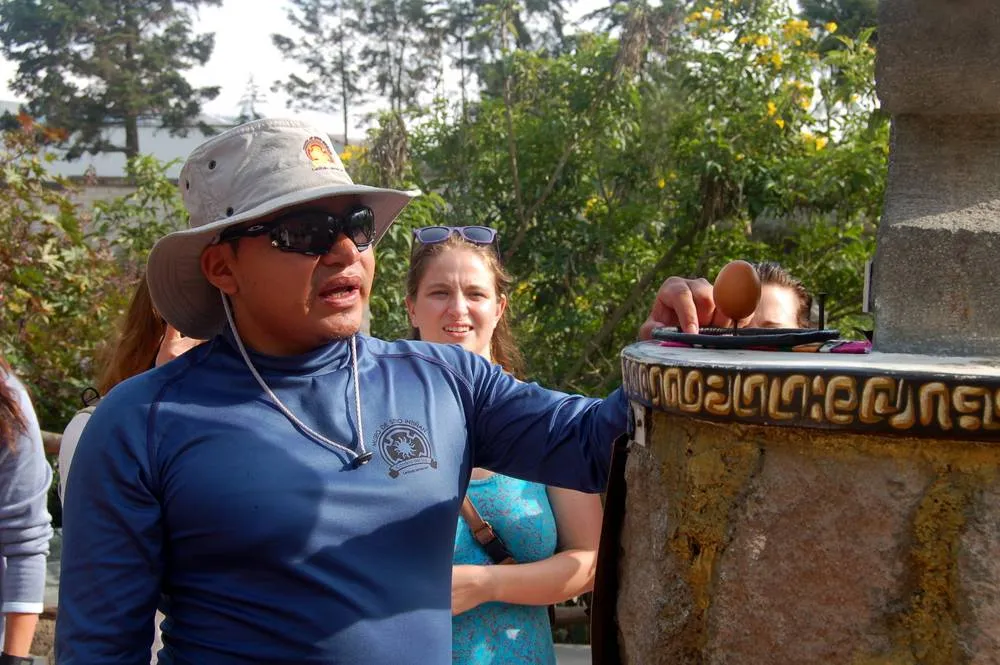
After trying to walk along the exact line of the equator with your eyes closed (which most people struggled with), you might try balancing an egg on the head of a nail. Supposedly, it’s only possible here on the equator due to the lack of the Coriolis, but even here it’s tough.
So it’s clear, these are nothing more than parlor tricks, gussied up to represent science, presented fairly well to gullible tourists. The campy site is still lots of fun, even if the truth behind it is questionable.
When you’re done, look for Equinnocial street with plenty of food options. Put your back to the monument and roundabout and head downhill, or head back to the bus stop for Quito. The pair of places make a worthy half-day trip, but keep reading to find my favorite.
Name: Mitad del Mundo / The Intinan Museum (Museo Intinan)
Address: Manuel Cordova Galarza, Quito, Ecuador (GPS: -0.002175, -78.455803)
Directions: From Quito’s Ofelia bus terminal, look for the Mitad del Mundo bus which stops right by the entrance and near a large roundabout.
For the Intinan Solar Museum, look at the monument from where you got off the bus. Look right for the main road that follows right from the roundabout. Walk 350-400 meters around the outside of the monument and look left for the sign. You’ll actually want to pass this sign and walk another 150 meters for the 2nd sign and the proper entrance.
Hours: 9:00am-6:00pm, open daily
Admission: For the Mitad del Mundo, $7.50 for the full view, which includes access to ascend the monument and other smaller museums, or $3.50 for solo entrada, just entrance to the area. (For the Intinan Solar Museum, $4.)
Phone: +593 2-239-4803
Website: http://www.mitaddelmundo.com
Onward to the true equator?
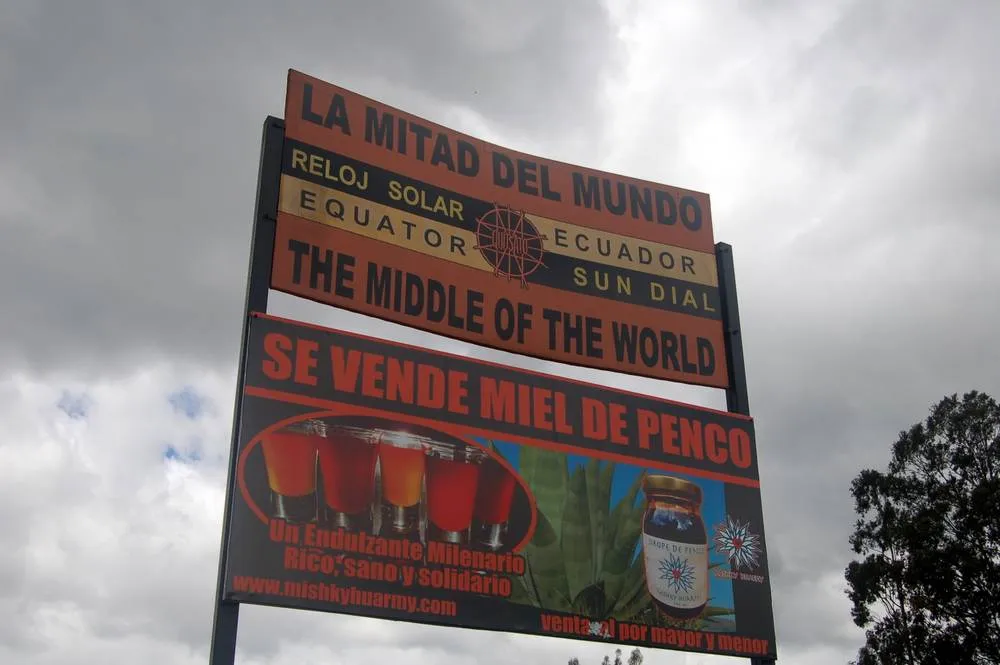
While it’s a much less touristed site by the looks of it, Quitsato (AKA Equator Sun Dial AKA La Mitad del Mundo Reloj Solar) also has a line made of stones to represent the equator. Off on its own along the Troncal de la Sierra as you head from Quito to Cayambe, it presents a chance to take in the real equator without the touristy fanfare:
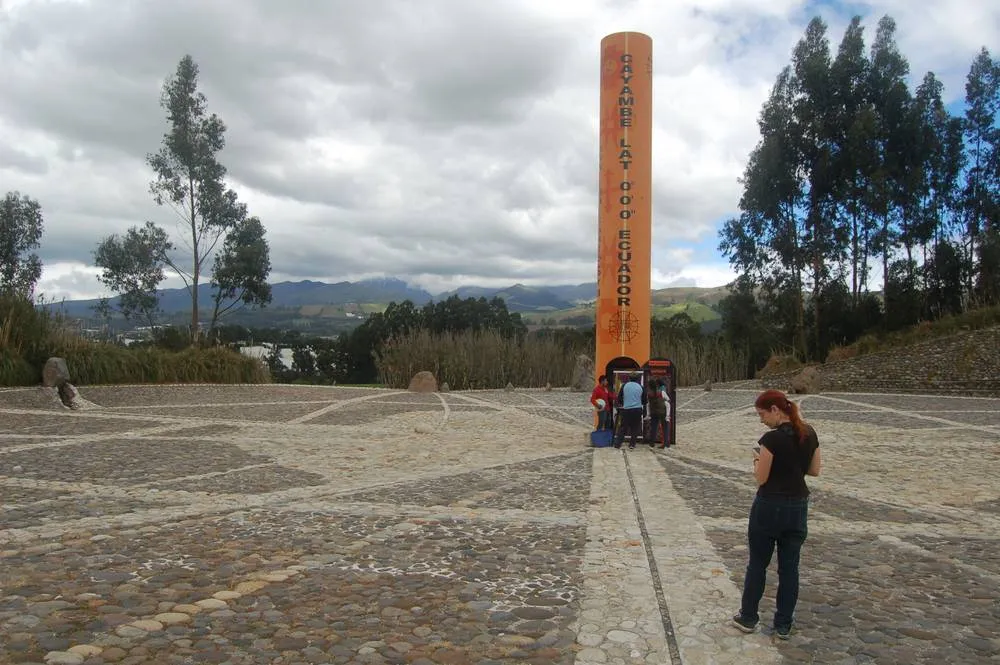
The large yellow pole opens up near the bottom with some scientific explanations – nothing you couldn’t find on the internet, but still a nice touch.
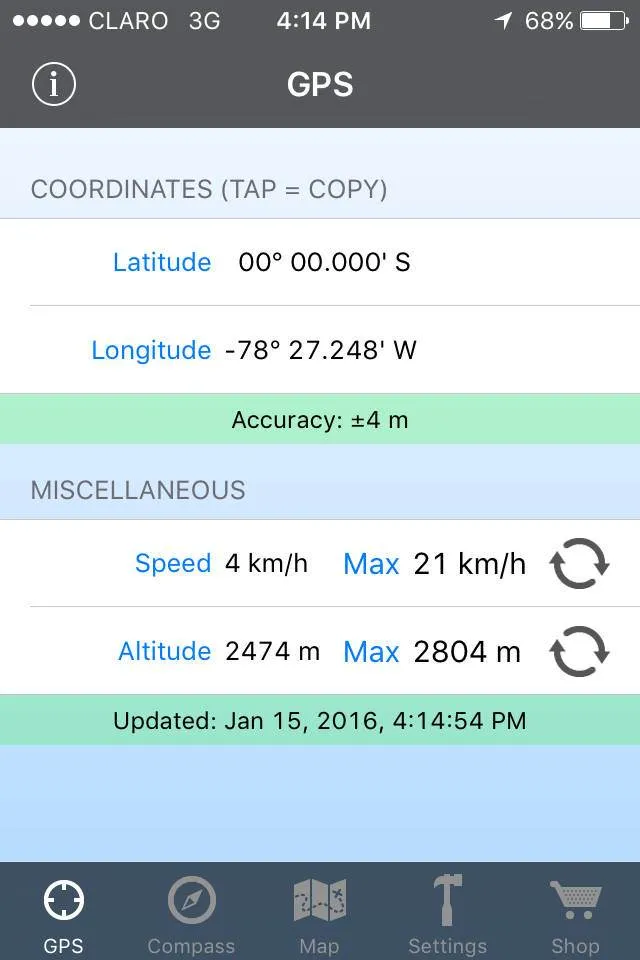
For the record, this site is where we found the real equator, as evidenced by an app called Easy GPS. It updates as you move, and once it’s locked in it gets to be within plus or minus 4 meters. (In the process of writing this piece, I came across this Wikipedia page showing some of the math going on the scenes of GPS. It’s all Greek to me, but probably fascinating to the right people.)
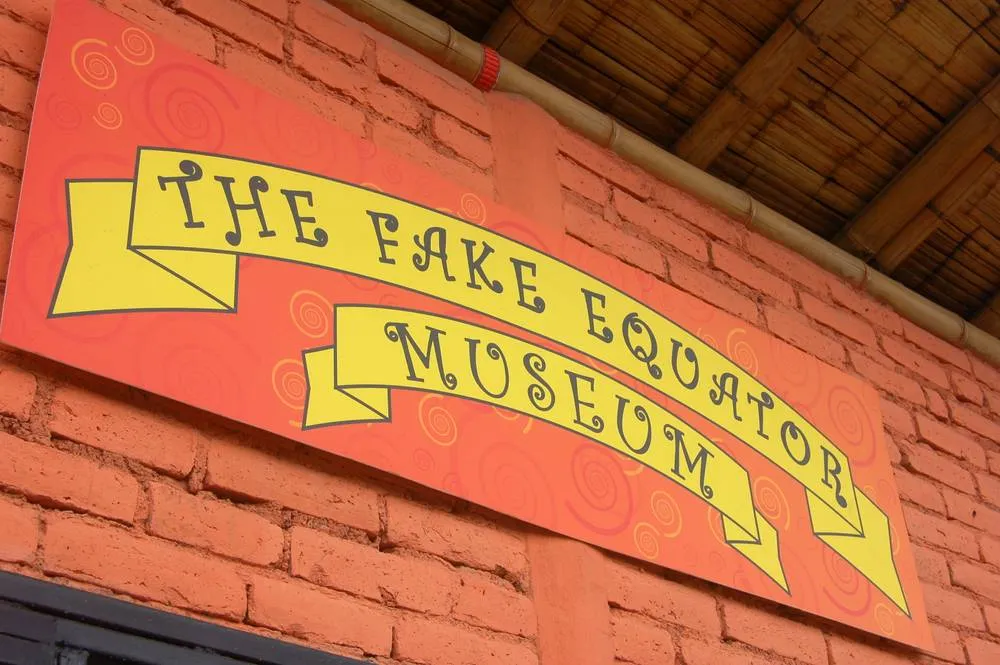
Getting back to the site, I’d like to present the ‘The Fake Equator Museum’, which is actually…
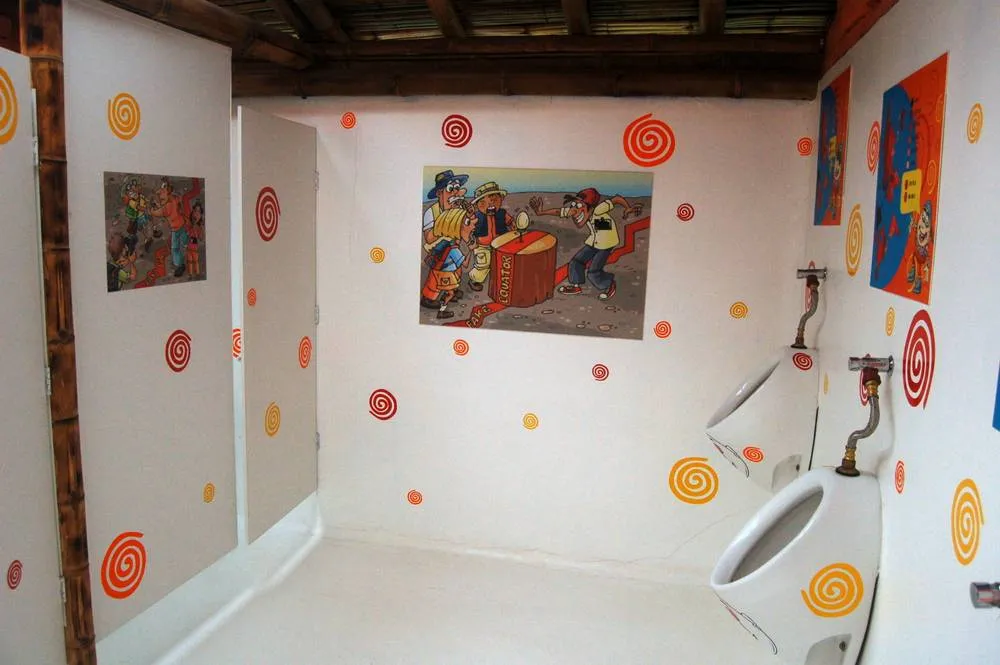
Yep, a bathroom. Both sides were completely unoccupied, so naturally we had to take a look on both sides. They’re essentially identical, down to the picture of the tour guide balancing the egg… and a rather odd picture:
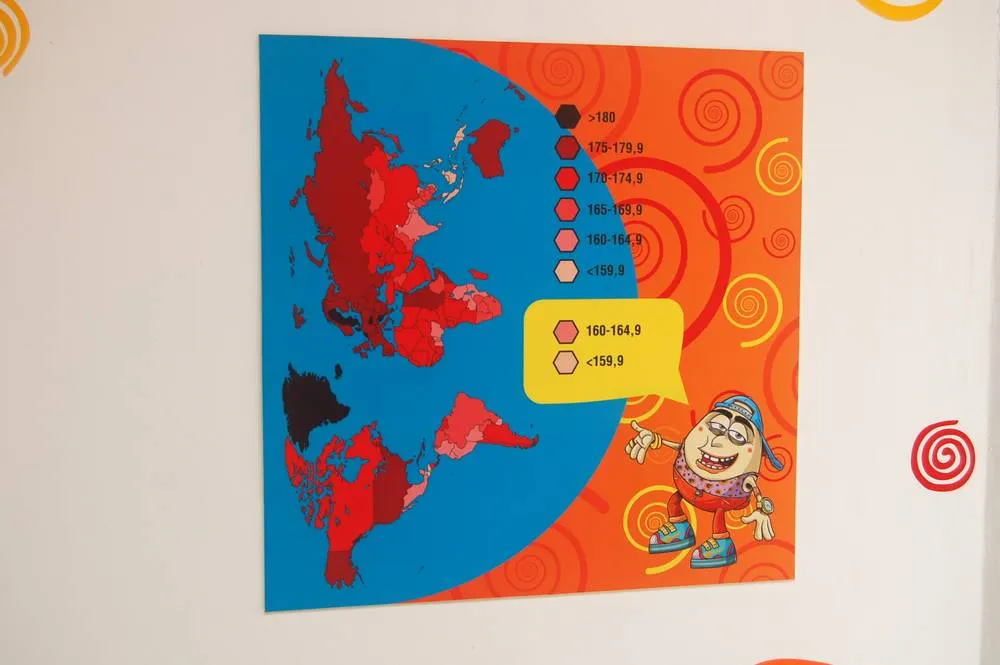
That’s all there was to this sign – no explanations or context. If you have any idea what’s going on here, I’d love to hear your theories in the comments. It’ll make a lot more sense if you’ve been to the other sites and after seeing the demonstration for yourself.
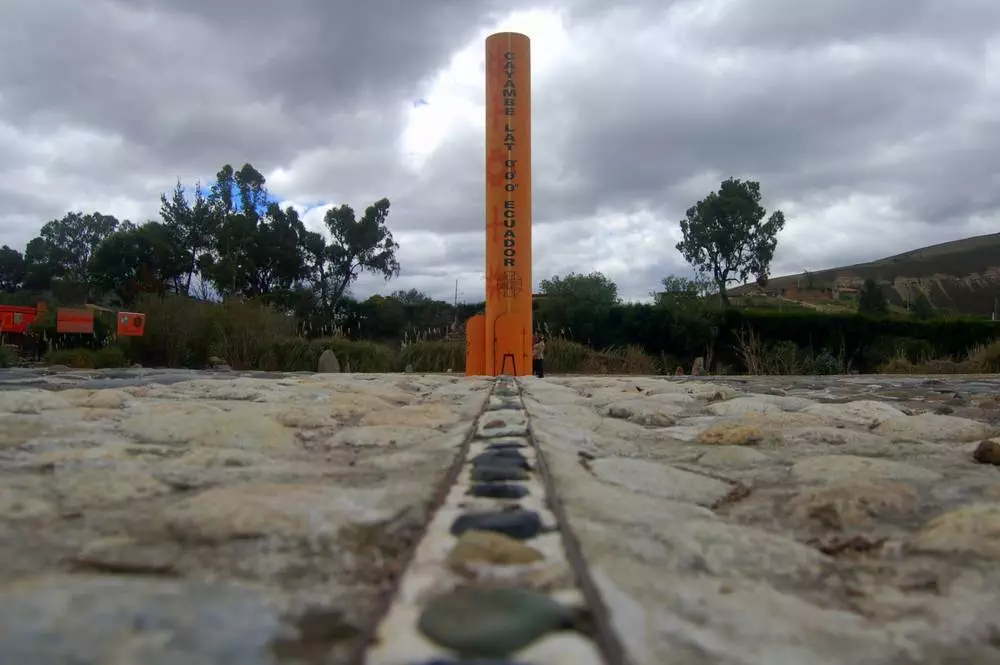
So there you go – the real equator, verified by GPS coordinates. It’s been claimed the exact equator ‘drifts’, which aims to explain why the line doesn’t necessarily coordinate with what the GPS says. Wikipedia notes the equator only drifts about 9 meters over the course of the year, so that doesn’t explain why it would be completely off a site… In any case, if you want to see the equator – the real equator – this is one of the best places to reach.
Name: Quitsato (AKA Equator Sun Dial AKA La Mitad del Mundo Reloj Solar)
Address: Av 10 de Agosto, along the Carrera Panamericana / Troncal de la Sierra, Pichincha Ecuador (GPS: -0.000107, -78.174989)
Directions: From Quito, get to the northern bus terminal, Ofelia. You’ll need to transfer to the interparroquial terminal, which is behind the Ofelia local bus terminal.
Hours: not posted, best visited during daylight.
Admission: $2 for adults, $0.50 for children
Phone: none
Website: www.quitsato.org/


